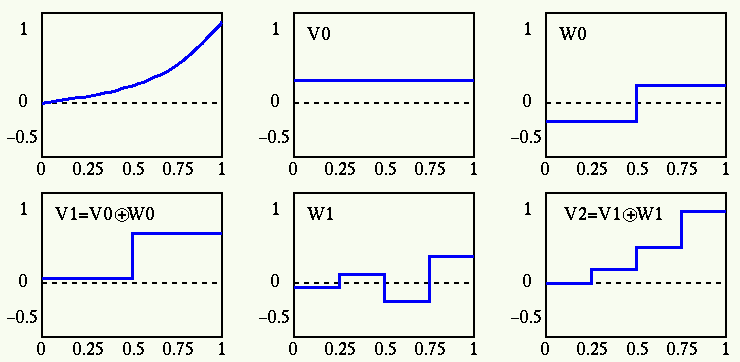For a specific value ![]() , the equation discussed above can be written as
, the equation discussed above can be written as

The first term contained in the wavelet expansion of the function ![]() represents
the approximation of the function at scale level
represents
the approximation of the function at scale level ![]() by the linear combination
of the scaling functions
by the linear combination
of the scaling functions
![]() , and the summation with index
, and the summation with index ![]() in the
second term in the expansion is for the details of different levels contained in
the function
in the
second term in the expansion is for the details of different levels contained in
the function ![]() approximated by the linear combination of the wavelet functions of
progressively higher scales
approximated by the linear combination of the wavelet functions of
progressively higher scales
![]() .
.
An Example
A continuous function ![]() is defined over the period
is defined over the period ![]() as:
as:



![\begin{displaymath}x(t)=\frac{1}{3}\varphi_{0,0}(t)+[-\frac{1}{4}\psi_{0,0}(t)]
...
...}{32}\psi_{1,0}(t)-\frac{3\sqrt{2}}{32}\psi_{1,1}(t)]+
\cdots \end{displaymath}](img143.png)

This process can be carried out further. By contineously reducing the scale by half
(spaces
![]() ), higher temporal resolution (always doubled) is achieved.
However, at the same time, the frequency resolution is reduced (always halved), as
shown in the Heisenberg box.
), higher temporal resolution (always doubled) is achieved.
However, at the same time, the frequency resolution is reduced (always halved), as
shown in the Heisenberg box.